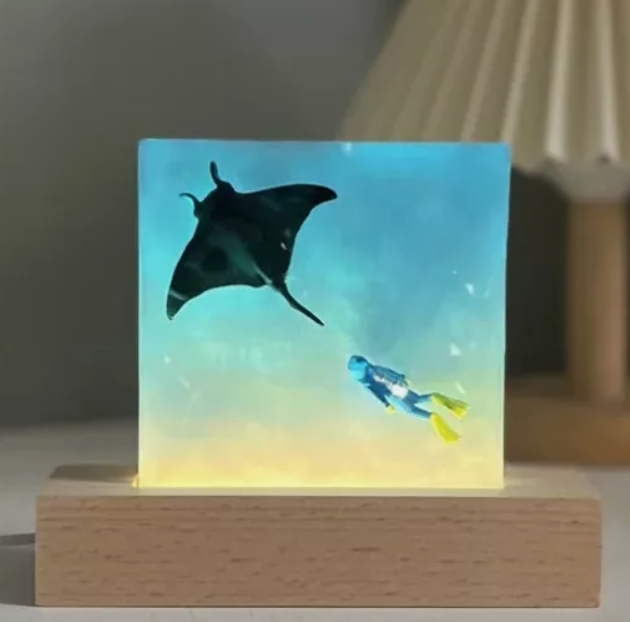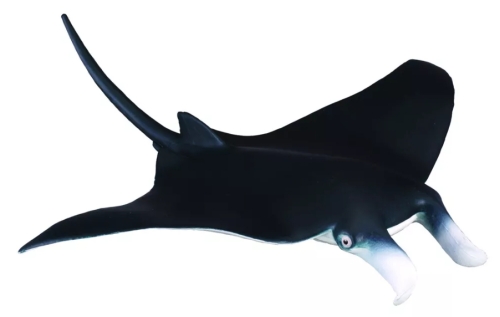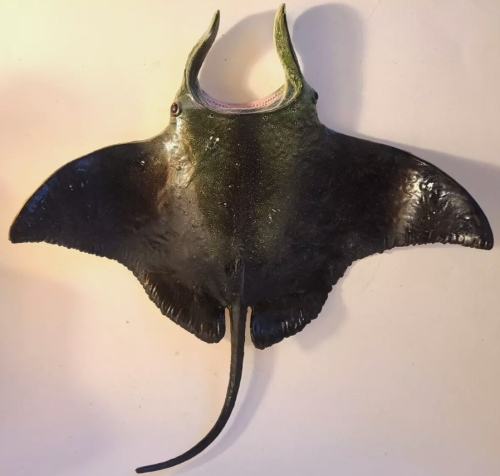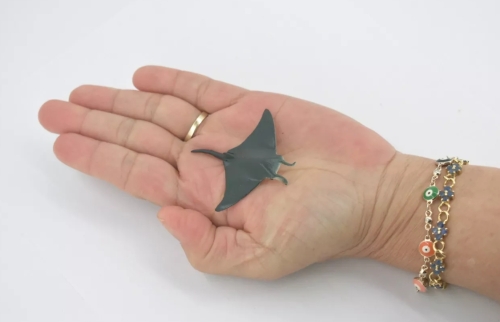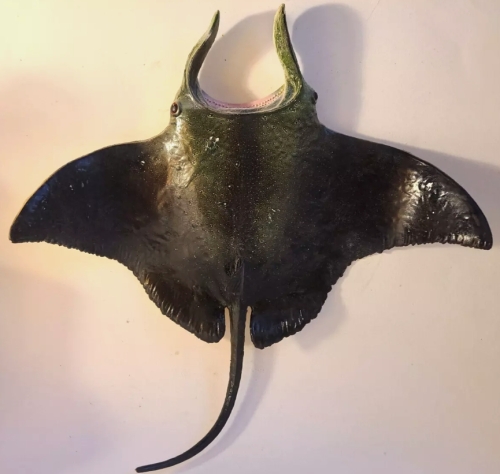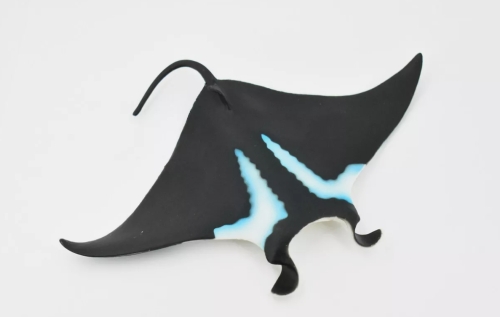Manta rays, also known as rays, are cartilaginous fish that are unique and fascinating creatures in the ocean. Its flat body shape and wide fins make it graceful and light when swimming through water. Manta rays have a unique appearance, usually showing a similar flying posture, reminiscent of dancers soaring in the ocean.
Manta rays come in a variety of colors, from dark blue to light gray and brown in different species, some with spots or stripes. Its skin is smooth and sometimes even shimmering, as if it were a spirit dancing freely in the sea. In addition,the devil fish is large,with a wingspan of up to several meters,giving people a shocking visual impact.
The creatures usually inhabit tropical and subtropical seas and prefer to linger near coral reefs. They feed mainly on plankton, benthic organisms, and small fish,and their hunting patterns are very distinctive. The manta rays use their large fins to perform a "predator hover",slowly swimming through the water and easily grabbing the swimming prey,demonstrating amazing hunting skills.
The social behavior of manta rays is also quite complex, usually in small groups, forming a certain social structure. They communicate with each other in a variety of ways,including body movements and voice. In some areas,manta rays migrate during certain seasons in search of breeding grounds. Such migration is not only for reproduction, but also to obtain more abundant habitat and food resources.
However,manta rays face many challenges in their survival in nature. Their numbers are dwindling in some areas due to human activities such as overfishing and habitat destruction. Therefore,it is particularly important to protect this unique Marine life. Through the establishment of Marine protected areas and the implementation of sustainable fishing strategies,it is possible to provide a relatively safe habitat for the manta rays to thrive.

